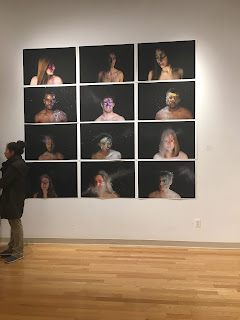Meraki Art Show Reception

On Friday 12/8, I attended the art show reception in the Julio Fine Arts Gallery. The pieces were quite beautiful; each collection shone in its own way, and it was really great to see artwork hung up by my fellow peers. I was not aware that it was a senior exhibition, created by students in an upper level art class at Loyola. I learned that all of the students whose artwork was displayed in the show were enrolled in a course, where the entirety of the class was creating a piece of art that would be shown in a show. I think it is amazing how Loyola offers such a class which helps students complete resumes, put together a portfolio, and enter in competitions. It is a whole different type of career development that I was not previously exposed to. One of the artists from the exhibition explained to the audience that "Meraki", the name of the show, means the essence of putting yourself into your work. After looking at all of the works if art and hearing from the artists themselve...


